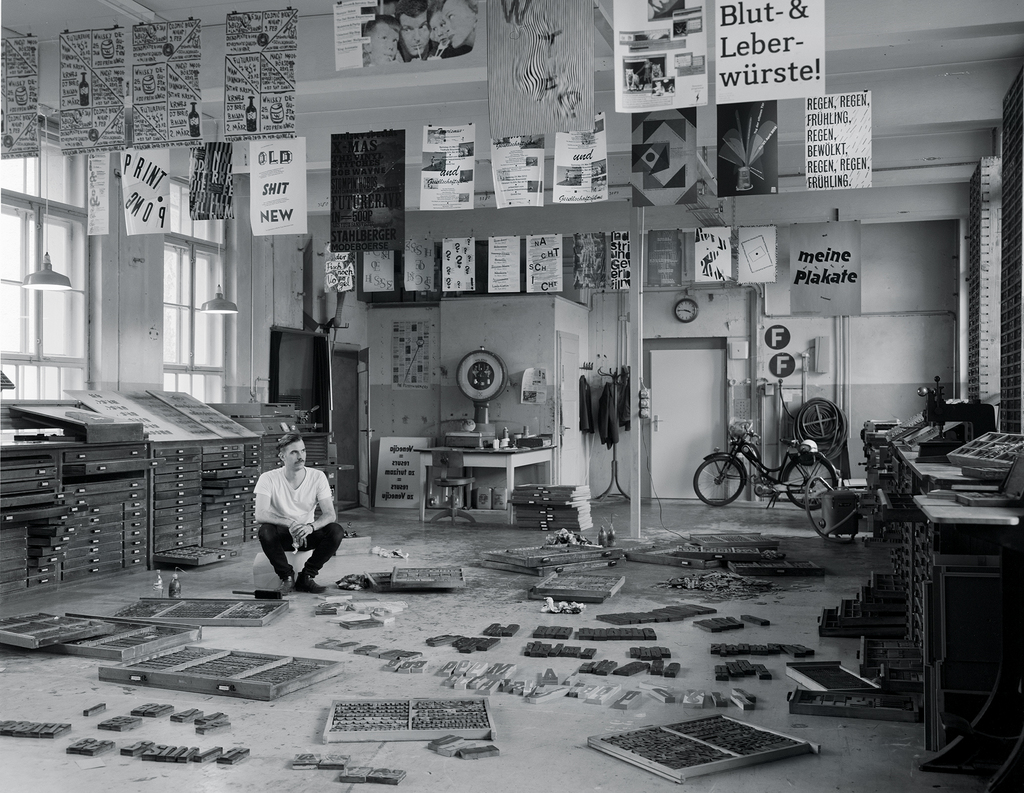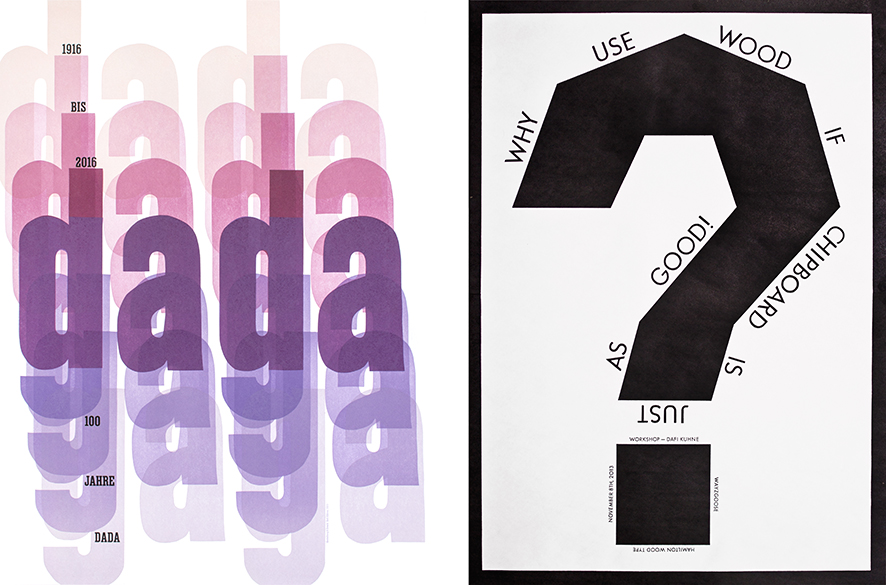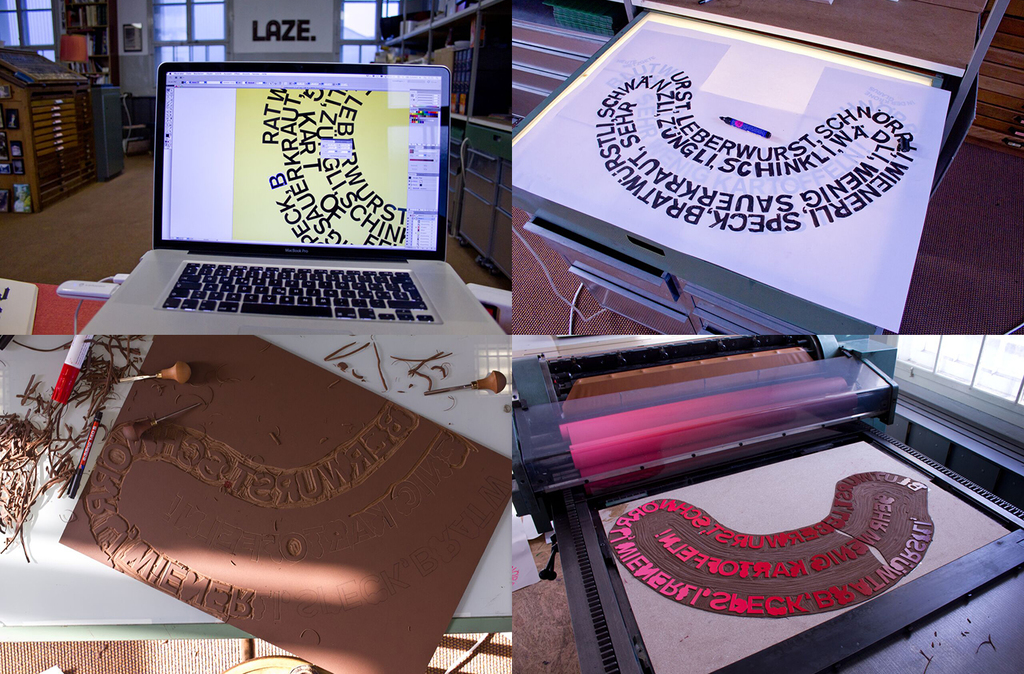
”I was lucky I found the perfect technique for me” – Interview with Dafi Kühne (Switzerland)
Svenska / English
Dafi Kühne is a graphic designer / letterpress printmaker from Switzerland who combines contemporary graphic design with old techniques. Since 2009, he has been working full-time in his studio «babyinktwice» designing and printing posters, invitation cards, brochures and magazines for music, art, architecture, theatre and film projects. Since 2011, he has also been teaching everything from short workshops to full semesters in various universities in Europe and the United States. In 2016, he published ”True Print” (with Lars Müller Publishers), his first book which includes a selection of his remarkable work.
Text: Meryem Saadi, Photo: Peter Hauser (portrait), Dafi Kühne (process, prints)
How did your fascination with letterpress start?
When I was still a student, I got an offer for a letterpress printing press and some type for almost no money. During that time, I already had a bit of experience from some University projects we did with letterpress printing technique. So I knew about the technique. But to be honest: If at that time somebody would have offered me some silkscreen utilities instead of offering me a letterpress proofing press, I probably would have taken it. I was just interested in the making, not specifically in a technique. That said: On the other hand, had I started a screen-print studio back then in 2007, I am pretty sure I would not be in the screen-printing business today. What I want to say is, I was lucky I found the perfect technique for me: Letterpress.
You have an impressive studio in Näfels. How hard is it today to find letterpress printing equipement to work with?
Almost everything I have here in my studio I bought for scrap metal prices. I started on a student’s budget! I could not go around and buy all the nice stuff on Ebay for ridiculous prices. If I had some money at the end of a month, I bought something. If not, I didn’t. That’s how I have collected something like 30 tons of equipment over the last 10 years. All functional printing equipment – no collecting just for the collection’s sake. In general, letterpress equipment is getting harder to find and prices are going up. But I still find it is possible to source some good material at reasonable prices.

How do you decide what pieces to buy?
The interesting point is that each single object, each typeface and each piece of equipment in my workshop is collected to be used. That’s the selection. Each object might not even be that much collectible from a collectors point of view. For example: I am choosing plain typefaces over decorative typefaces. Because plain typefaces have more flexible uses in my job as a contemporary poster designer. Or I am choosing plastic type over wood type. Because the printing quality is much better than the one of wood type and again therefore more valuable for my work.
You organize workshops for students and you also teach at various universities. Do you think that more graphic design schools should encourage their students to experience the hand-craft of design in order to master it?
I believe there are so many ways to teach graphic design to students. For me, it all comes down to valuation of qualities and appreciation of your own work. That is what I want to teach my students. And this is possible to teach with digital methods, but for me it is much easier to teach in analog. Over the past 7 years, I have been teaching short block workshops as well as full semesters at many different Universities in Europe and also the USA. For me, working with letterpress is the most direct way to show the students my approach. And in a todays very digital practice, for many students it is freeing to be able to work hands-on again. But I don’t want to be teaching a museum’s practice or a history class. I am interested in teaching real design tasks that have an influence on how we work and treat design problems. Again, how we value our own practice. My approach, the students learn in my analog design classes are 100% applicable for the daily digital practice.

What is the difference between the classes you give at universities, and the ones you give in your own studio?
Yes, I also teach my own summer program in Näfels. Teaching as a guest at different Universities with different setups, formats, curriculums and also very different workshop facilities brought me to a point where I asked myself: What would an ideal short workshop look like? This is how I came up with this intense two week workshop for international students and professionals. This year, we will be working with participants from Switzerland, Germany, Spain, Finland, Sweden, UK, USA, Saudi Arabia, India, China and Australia. Crazy, isn’t it?